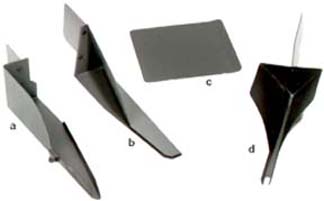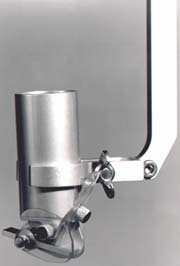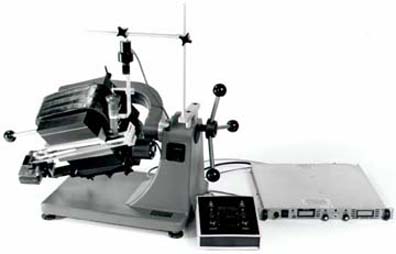|
|||||||||||||||||||||
|
Model LB-1 Page 3 Diamagnetic Separation/Barrier Separation/ Paramagnetic Separation/Applications/ Field Graph/ L1 to LB1 Conversion/Feed Troughs/Feed Hopper/Complete System/Specifications |
||||||||||||||||||||
|
The feed system is mounted on the column of the base. The feed hopper is suspended over the receiving compartment of the chute. The feed and travel systems have separate electrical circuits and controls. The chute is supported on a sturdy, movable carriage to which the chute vibrator is attached at an attitude which transmits vibration at an angle upward from the surface of the chute. |
The power supply, installed between the alternating current source and the separator’s coils, provides linked regulation of direct current and voltage. As resistance increases with heating of the coils, voltage increases automatically to maintain the selected current. In normal intermittent operation stable currents up to about 1.8 Amperes can be maintained in ambient temperature up to approximately 32º C (90º F). With the former electrical system, without current regulation, maximum current at start-up of 1.8 A fell off to 1.5 A within one half-hour. |
|
|
|


